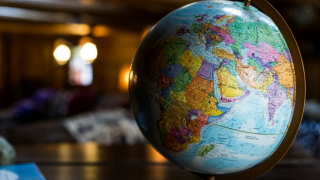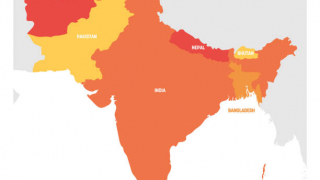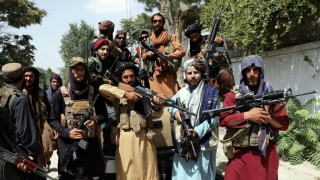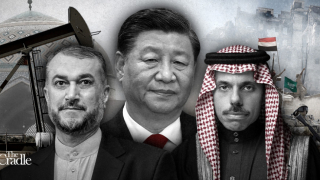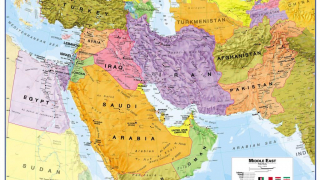Sino-Indian Relations & CPEC
The Post Pulwama standoff between Pakistan and India and the resultant escalation has brought South Asia to the brink of a nuclear war; despite apparent cooling down of situation, the military drawdown has not taken place. While the entire world held its breath to watch the next phase of this escalation, China has played a very mature role by asking both sides for restraint. It may be difficult to peep into mind of Chinese leadership; this paper is aimed at connecting dots to find out growing anxiety in Sino India relations and the undercurrents in the region, so as to arrive at plausible conclusions on how China may be viewing the recent escalation.
Sino India relations are very complex and have evolved over a period of decades, on one hand both states have had suspicion about how the opposite sides behaves, due to historical reasons, while on the other hand, there is an apparent urge to normalize the relations, especially in the economic field.
India has remained skeptical about growing geo- economic relations between Pakistan and China and she has been objecting to CPEC on flimsy grounds that it passes through a disputed territory while forgetting that Occupied Kashmir is also disputed and internationally recognized as such. India also forgets that she has built dams and roads in Occupied Kashmir and still denies right of self-determination to 12 million Kashmiris.
In physical domain the ‘Balakot Tree Strike’ was a direct assault on CPEC, especially if one sees at Indian Navy deployment at North Arabian Sea and the fact that chosen missile targets by Indian Military included Gwader as well. China is well aware of this latest posturing; technically speaking, India had an intention to target both ends of the CPEC, Balakot in the north to Gwadar in the South West.
How did China see this latest standoff between two nuclear armed rivals and why she blocked Indian efforts on Masood Azhar is a million dollar question, especially when international community kept quiet on Indian Tree Strike on 26th Feb, almost condoning Indian jingoistic but futile operation?
Bigger question is for Asia Pivot peddlers and those powers of the so called Quad, who want to assign the role of sheriff to India. I am sure they must be feeling embarrassed for betting on the wrong horse, India, who was unable to take on a middle level power like Pakistan.
Conceptually India has never left any opportunity to project herself in the Indo Pacific region; all the high sounding jargon used in the Raisina Dialogue held in New Delhi in Jan 2019 seem to have been scattered in the Lam valley when PAF shot down two Indian Aircrafts and Pak Navy locked on to the pride of Indian Navy, the French made submarine INS Kalvari. Has Pakistan military blunted the very idea of Asia Pivot by exposing the operational shenanigans of the key player and the pampered horse called India and where do we go from here?
While it may be difficult to go through the entire history of Sino Indian elations since 1948, the 3500 kms of un-demarcated border between both countries and the fact that Indo-China war of 1962 resulted in total humiliation of India still remains a major bottom-line for any discourse on this relationship. India has been hosting the Dalai Lama as leverage against China to keep the bogey of Tibet alive and play in international forums for China bashing. Doklam standoff between PLA and Indian Army happened just two years ago and Indian media regularly sounded loud anti-China rhetoric from the Indian establishment, opposition and mainstream media, even blaming the Chinese forces of infiltrating the Line of Actual Control in the Ladakh/Aksai Chin region.
As stated by my colleague Mr Kauravi in an article published in April 2016 with the title, The New Great Game, ‘the US had been consistently prodding India since 2004 to cement their security relationship by enhancing military cooperation. In military parlance, logistics is the activity of organizing the movement, equipment, and accommodation of military forces. Apparently a benign word, logistics forms the backbone of military operations and is considered the first step in any military campaign. During US Defence Secretary Carter’s visit to India in 2016 Logistics Exchange Memorandum of Agreement (LEMOA) was signed for a Strategic Logistic Agreement; a report in the Hindu newspaper published in Sep 2018 suggests that it has now become fully operational.
Kauravi goes on to highlight that the US-sponsored concept of developing an Asia pivot with leading powers of the continent like Japan, Australia and India is now crystallizing into a meaningful military cooperation. China’s strategic encirclement and creation of a new Rim-land around China from West Asia through Indian Ocean right up to Sea of Japan is now becoming a reality. Japanese PM Shinzo Abe had been propagating an Asia’s Democratic Security Diamond to contest a rising China. According to him: “The ongoing disputes in the East China Sea and the South China Sea mean that Japan’s top foreign-policy priority must be to expand the country’s strategic horizons..I envisage a strategy whereby Australia, India, Japan, and the US state of Hawaii form a diamond to safeguard the maritime commons stretching from the Indian Ocean region to the western Pacific. I am prepared to invest, to the greatest possible extent, Japan’s capabilities in this security diamond”.
The new strategic partnership between both powers is also a reminder to Pakistan that India will be given full support as a regional hegemon to play a greater role on behalf of the US by enhancing the old Obama Doctrine. The Pakistan-China strategic partnership and fast-track development on the CPEC is seen with lot of suspicion in Washington and New Delhi and this project will constantly remain on the radar of both powers. Indian efforts to sabotage this project, as indicated in the Kulbhushan Yadav case, support this argument.
Quad will also affect the Russian Federation, an old Indian ally; is India conveying to the Russians that it is no more neutral. Taking cue from Kauravi, if US and Indian Navy ships are seen patrolling the Indian and Pacific Oceans and Shinzo Abe’s dream of Asia’s Democratic Security Diamond aka ‘Quad’ becomes a reality, it would effectively become a counter-weight to the Russo-Chinese strategic partnership and Putin’s Eurasian dream.
It may be important to discern from recent Raisina Dialogue held in Delhi in Jan 2019. There was an interesting topic of discussion in one of the panels mentored by Yalda Hakim titled “Indo-Pacific: Ancient Waterways, Emerging Geometries”. The discussion started with the question on Indo Pacific, where Yalda Hakim blatantly asked, “why the three major concerns in the region are China, China and China”. The Indian Naval Chief Admiral S Lanba described Chinese Maritime strategy in the Indian Ocean by saying that no navy has grown in the region faster than the Chinese. It was also interesting to see the Chief of French Navy present here. Other than those representing the so called Quad (Australia,India,US and Japan), French Naval Chief’s presence indicates that this Quad is more than what meets the eye. French are not only platform suppliers but also involved in joint exercises and staging of officers in ‘Fusion center’ established in Delhi
As reported by Reuters in Oct 2018,Japan's largest warship, the Kaga helicopter carrier, sailed into Sri Lanka's Colombo harbor , marking Tokyo's highest-profile salvo in a diplomatic battle with China for influence along the region's vital commercial sea lanes. Japanese Naval Chief boasted in Raisina dialogue that Asia welcomed this development. Most of speakers unequivocally contested Chinese unilateralism and were condoning militarization of Indo Pacific.
The US stance in the dialogue was that Chinese Belt and Road initiative was not inclusive but ‘exclusive and predatory’ and that it went against the so called international norms and relations. There was also a talk on expansion of the Quad based on shared values, interests and international law, most probably intent to drag ASEAN counties into this chaotic militarized Indo Pacific game.
Looking around one finds the lighting of strategic fires in the Indian Ocean Rim countries, already raging in MENA region adjoining Indian Ocean, is it part of the grand design to disallow Eurasian unity and is India now becoming part of this grand design?
Unfortunately India has played in different international forums in the garb of new mantra of multi-alignment, whether it be the BRICS,G20,Indo Pacific or SCO, India has tried to play major powers against one another.
China has to tread the coming decade with dexterity and balance; especially while dealing with India. Indian jitters and frustration with China, during Indo Pak standoff with jargons like ‘China Backs Terror’ and ‘Boycott Chinese Goods’ must be seen in the total context of Indian nefarious designs in the Indo-Pacific.


